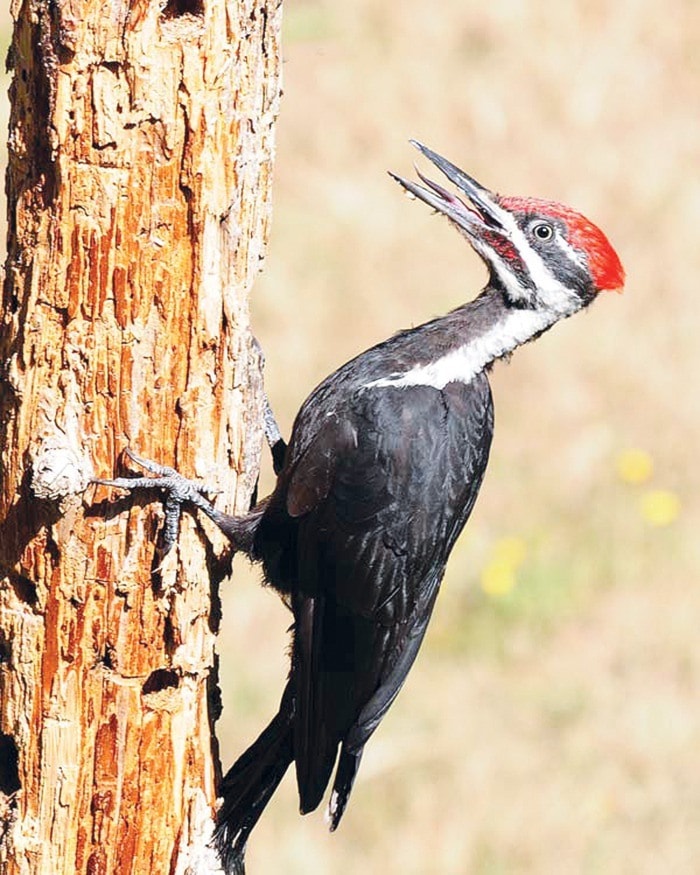One of the most charming and comical species of birds has to be the pileated woodpecker. Its unusual name is derived from the Latin word, “pileum,” which described a pointed cap worn by the Romans.
The pileated is the largest of the thirteen species of woodpeckers, which also includes flickers and sap suckers. Locally the most common woodpeckers are the pileated, hairy and downy. Woodpeckers are very important “keystone species” and critical to the safety and well being of many other wildlife species including, squirrels, owls, wood ducks, and many small songbirds that depend on them for nesting sites and food sources.
The pileated woodpecker is easily recognized by its distinct red head crest and is similar in size to a crow, but has a longer and more slender beak. In addition to the red crest, the male also has red markings at the base of the beak and a red moustache. Their bodies are mainly black with a white stripe running under the eyes and down the neck.
The silence of the forest is often broken by the loud drumming on a nearby tree as the woodpeckers announce their presence to a potential mate. In addition to the drumming, they are also very vocal, with raucous nonstop chattering.
These woodpeckers are found in densely forested areas that have a supply of dead or decaying trees where they excavate holes in search of food, or to create a nest. The nests are only used once. They then abandon them and many other wildlife species use them.
Locally, these woodpeckers are important to our smaller owls especially the northern pygmy, saw whet and western screech owls, providing them with cavity nests.
Woodpeckers are equipped with long chisel shaped beaks with special features allowing them to hammer away at a tree. When watching a woodpecker at work one wonders how its head can take so much pounding; they have extremely thick skull bones that are designed to absorb the shock. Pileated woodpeckers excavate large oblong or square holes, in contrast to flickers which are round and sapsuckers which drill a ring of small round holes circling the tree trunk, which eventually weaken or kill the tree.
Pileated woodpeckers are not regular visitors to M.A.R.S. as they do not usually stray into urban areas. However, their habitat is constantly being encroached upon and dead trees are being removed.
We rescue more birds that have flown into windows in fall. With the berries ripening the birds often become intoxicated with the fermenting fruit. If you find such a bird on the ground, place it in a covered box and leave it in a safe, warm, dark, quiet place and check after an hour. Often the bird is just stunned and will fly away. For further information, or to report injured, abandoned wildlife, please call 1-800-304-9968. For all other calls, phone 250-337-2021, or visit our web site at www.wingtips.org.
